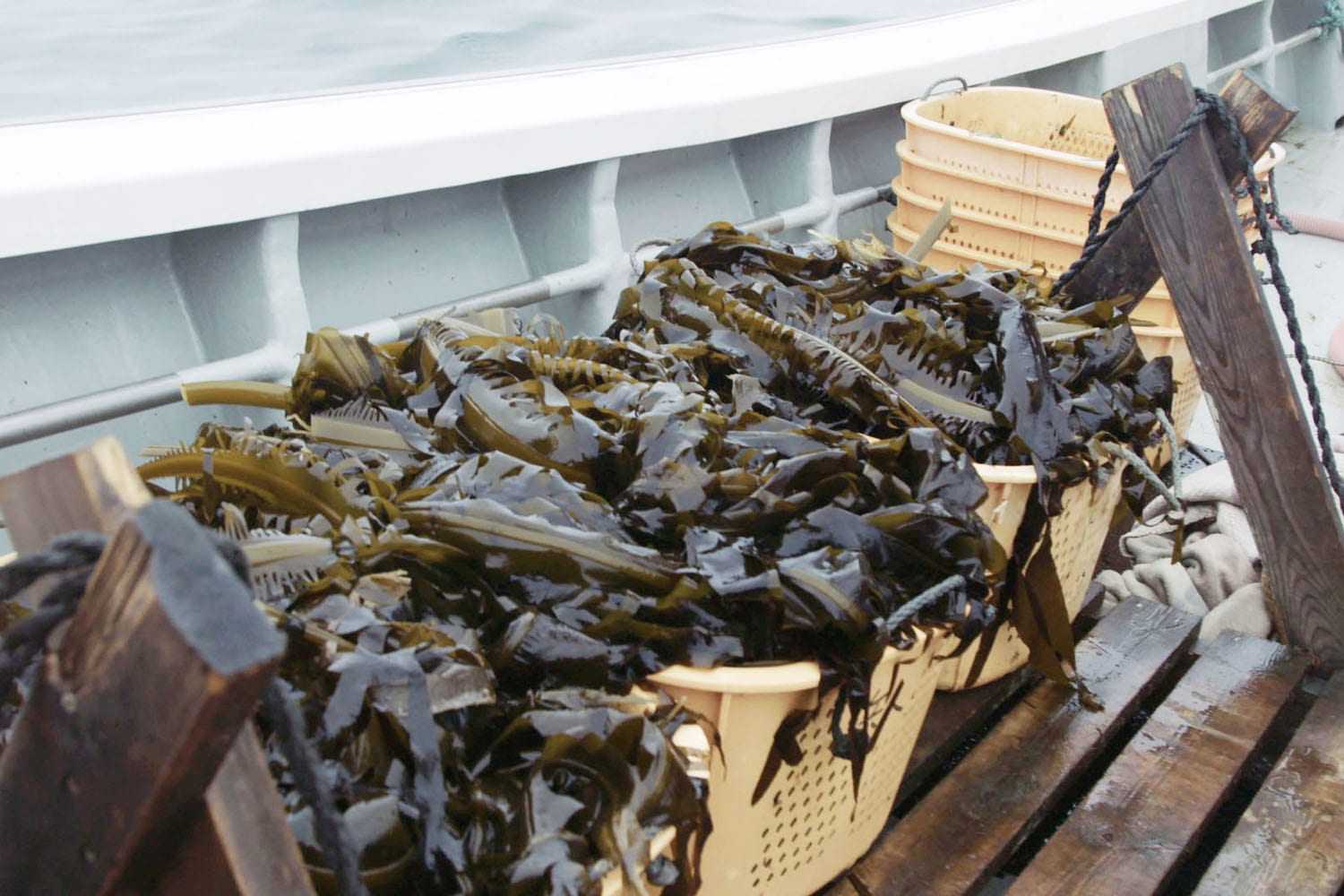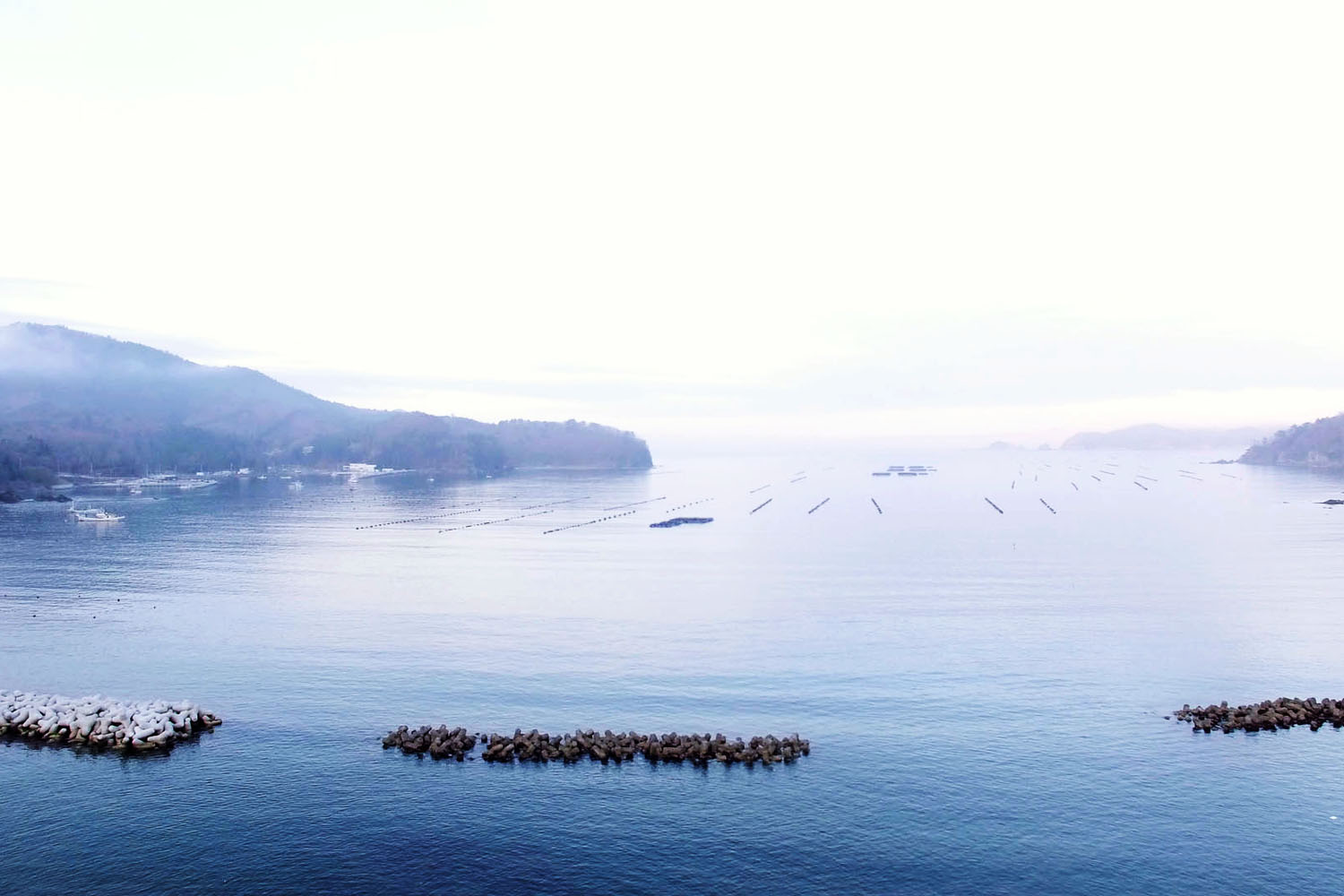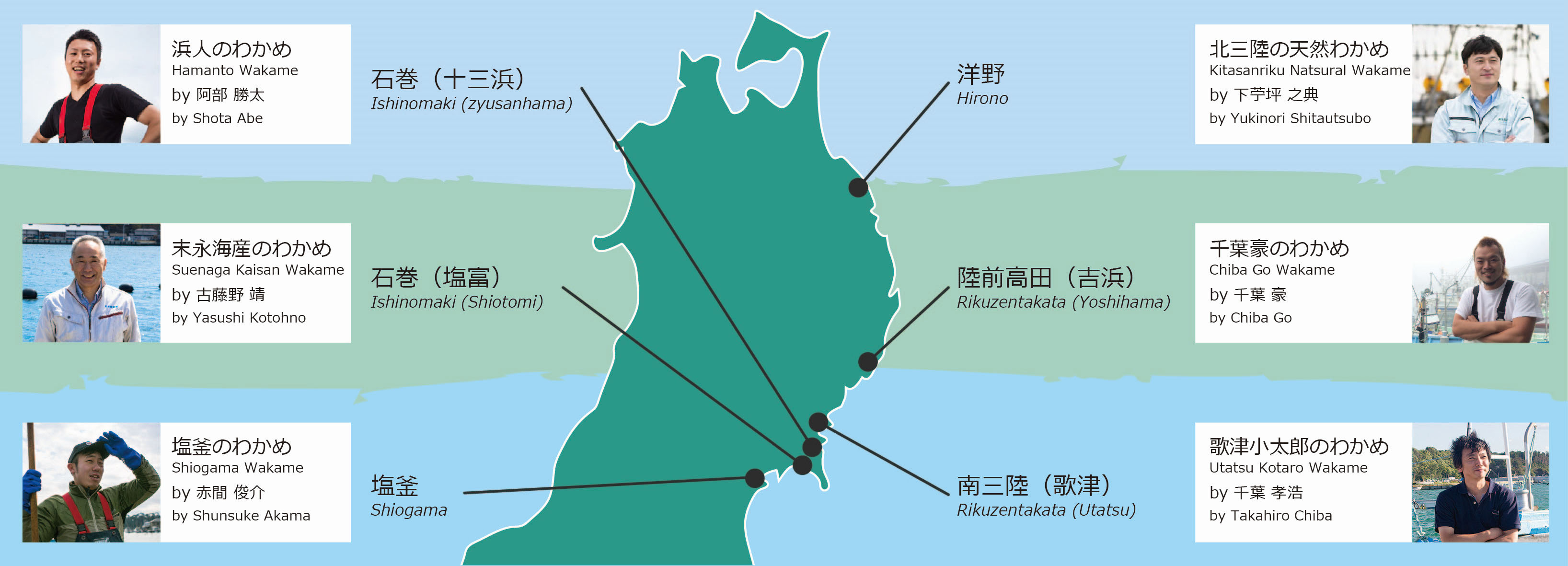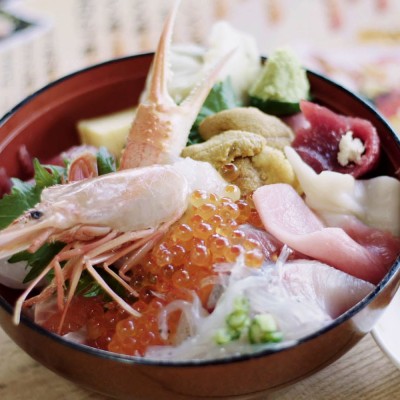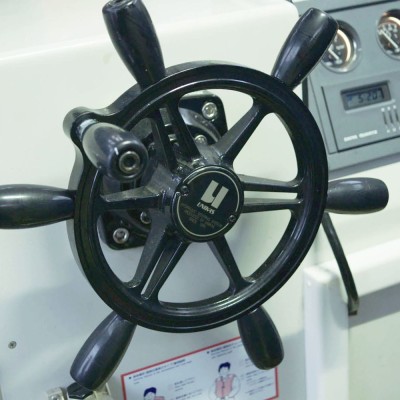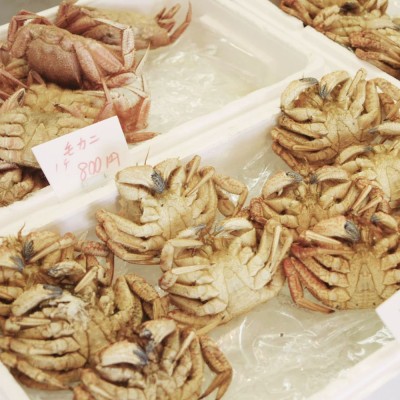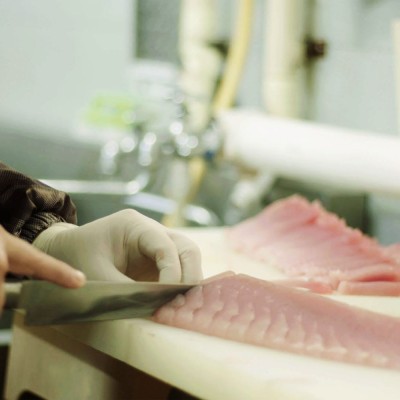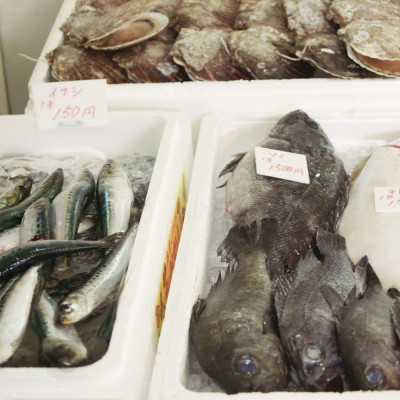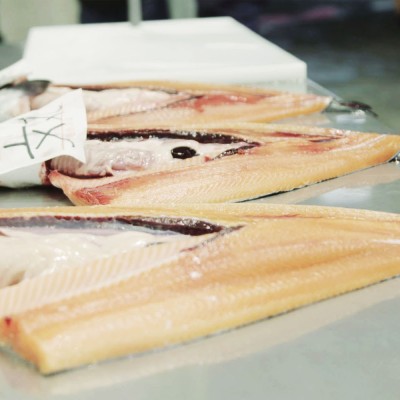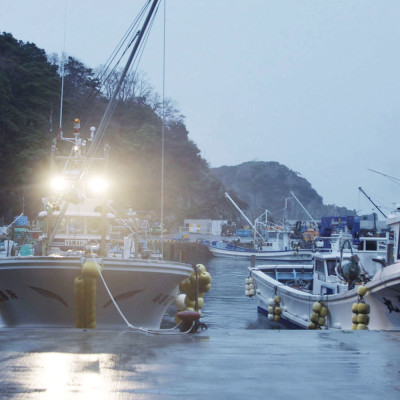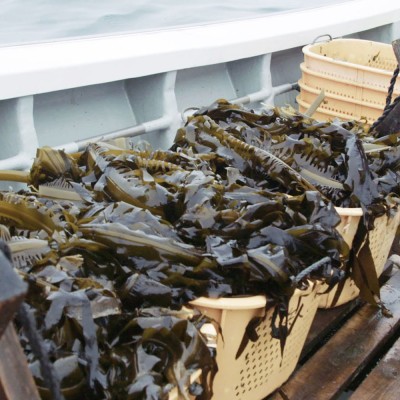三陸わかめ
三陸わかめはリアス式海岸と潮目が織りなす独特の海流、山と海の豊富な栄養のもとで育っています。
特徴
三陸とわかめ
親潮と黒潮がぶつかり合う潮目、そしてリアス式海岸により独特な海流が生まれ、わかめの葉や茎が鍛えられ、他では味わえない肉厚な食感に育ちます。 また、潮目によりプランクトンが豊富かつ山からのミネラルも相まり、栄養豊富なわかめに育ちます。
Sanriku Wakame is strenghtened by unique ocean current by Rias Coast and current-rip. The mouthfeel is very thick, that you cannot experience with the other.Besides, Sanriku Wakame is nutrient-rich, because it grow up with plenty of plankton in the current-rip and minerals from mountains.
ブランド/漁師
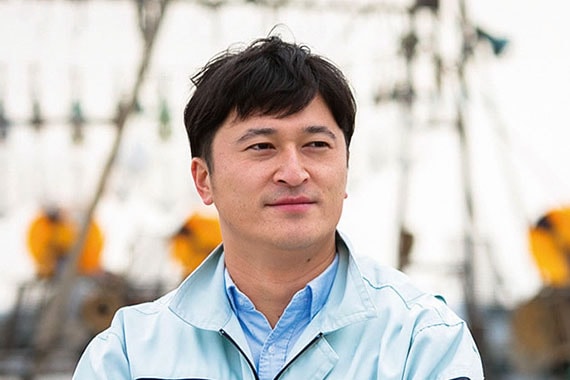
“まじりっけなし、天然の超肉厚わかめ。噛むほどに磯の香がいっぱいに広がる。”
“Inartificial, natural ultra-thick Wakame. Chewing makes your mouth filled with ocean flavor.”
北三陸の天然わかめ/下苧坪之典
Kitasanriku Natural Wakame
太平洋の親潮と黒潮が入り組む荒波の中、流されないようがっちり岩に張りついた北三陸のわかめは、歯ごたえが超肉厚。とくに三陸の中でも断崖絶壁の多い北三陸では、養殖ではない“天然” のわかめを収穫することができます。天然のわかめは、日本全体の水揚げ量の5%に満たない貴重な海の幸。それを漁師が海底まで潜り、鎌で刈り取るのが北三陸ならではのわかめ漁です。漁師が命がけで潜り、それを手作業で丹念に湯通しした北三陸の天然わかめは、本来の味と食感が生き、噛めば噛むほど磯の香りが口いっぱいに広がる逸品です。
In Kita-sanriku (Northern Area of Sanriku), which has heavy sea and a lot of precipitous criffs, ultra-thick Natural Wakame can grow up.Natural Wakame accounts for only 5% of wakame landing in Japan. It is harvested in the traditionalway that fhisherman dive toward the sea bed, and reap it with a sickle there. The more you chew it, the more you can feel the original taste and texture of wakame.
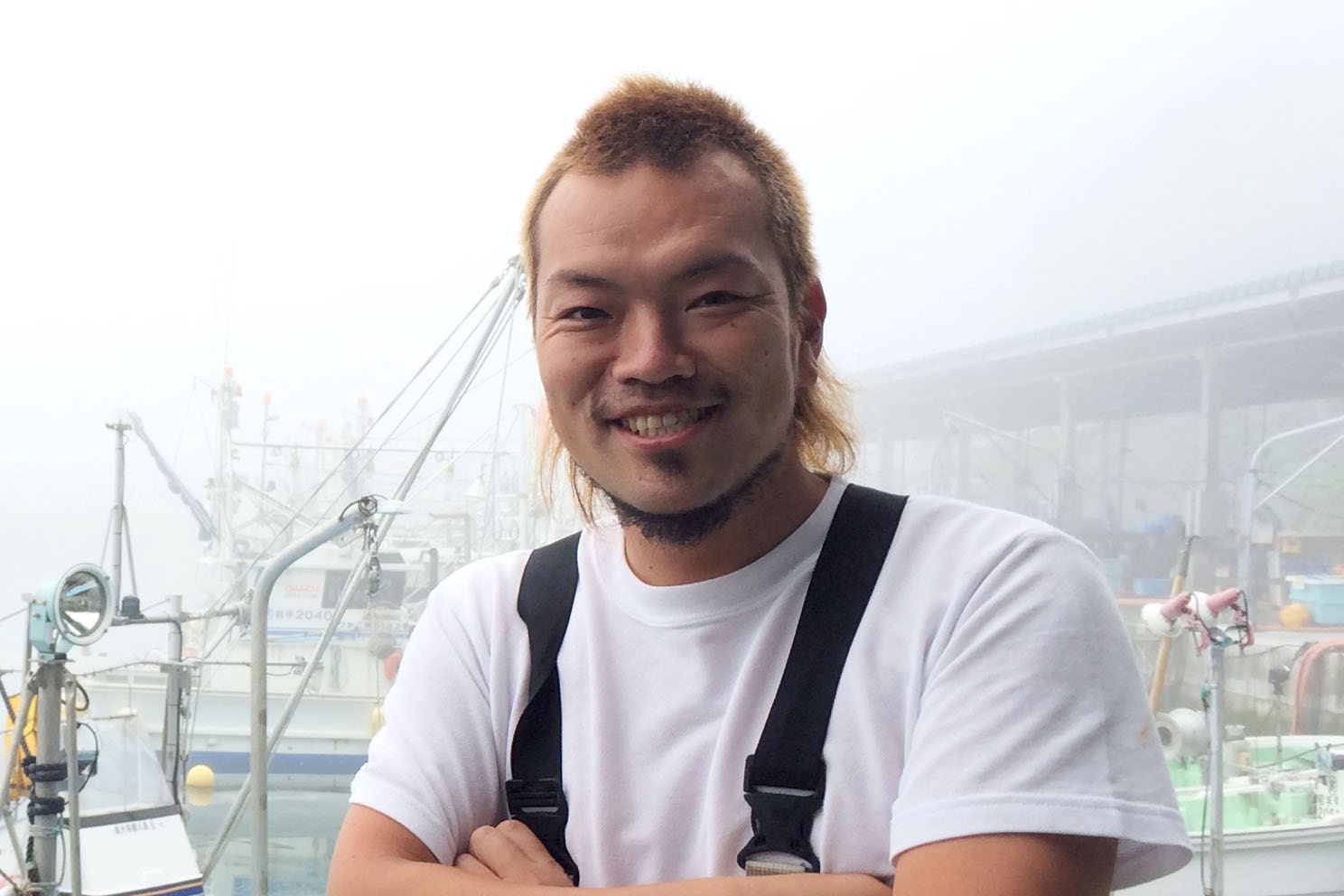
“世界で一番うまい・・・。”
“The world most delicious…”
千葉豪のわかめ/千葉豪
Chiba Go Wakame/Go Chiba
ワカメ漁シーズンの三陸、そして、吉浜は、まだまだ厳しい寒さの中です。春とはいえ、雪の日もあります。海の水温は、1年間でこの時期が最も低く、4度前後です。海に落ちれば30分で死にます。太平洋の波の力は強く、三陸の海は荒れます。海のうねりが大きく、隣の船が見えなくなったりします。危険と隣り合わせの過酷なワカメ漁が、早朝から深夜まで続きます。そんなワカメ漁の中で、楽しみなのが、朝ごはんです。漁の合間に海で炊いたご飯と味噌汁で朝ごはんを食べます。お椀に入れた味噌とダシにお湯を注ぎ、そこにあるワカメを入れただけの味噌汁。この時ここで食べる味噌汁が世界で一番うまい味噌汁です。
Wakame harvesting season is still severe cold at Yoshihama in Sanriku. Though it is spring, there are snow days on ocassion. Sea water temprerature drops down to the lowest in a year, 4 degrees, at the time. If we falled into the sea, we would die in 30 minutes.
Sanriku sea rages with strong wave of the Ocean Pacific. We sometimes lose sight of the other fishing boats by heave of the wave. Such a dangerous Wakame fishing lasts from early morning to midnight.
In the severe situation, we look forward to eating breakfast, rice and Wakame miso soup. The Wakame miso soup, which is simply cooked only with miso and soup stock, is the most delicious soup ever in the world.
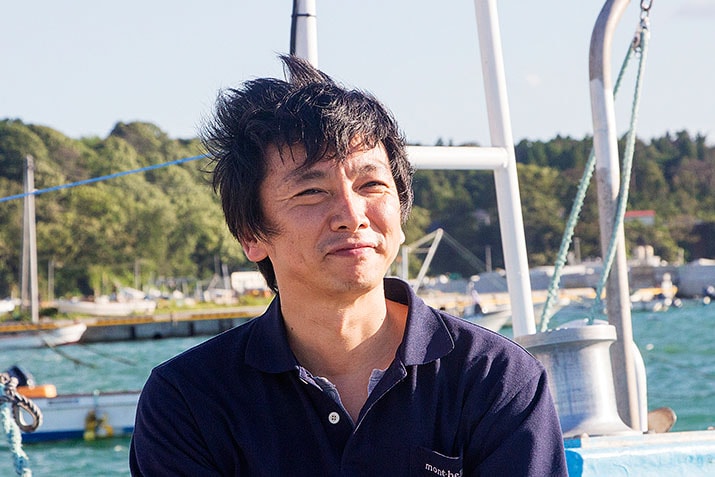
“ツルツル感にシャキシャキ感、たまらない食感!”
“Slippery and crispy, irresistible texture!”
歌津小太郎のわかめ/千葉孝浩
Utatsu-Kotaro Wakame/Takahiro Chiba
外洋の荒波でもまれ、葉肉に厚みがあり、しっかした歯ごたえが特徴の南三陸歌 津のワカメ。地元漁師も絶賛する2月に刈り取った新芽の柔らかいワカメだけを 選りすぐり、中芯部分はひと手間かけて取り除き、食べやすさを追求しました。 サラダから煮物まで、素材が持つ本来の風味と食感にこだわったワカメです。
Utatsu-Kotaro Wakame is characterized by the thick leaves and its crispy mouthfeel.
The Wakame grows up in the open sea of Minami-Sanriku. Fisherman selects and reaps Wakame only with soft sprout in February. The firm stem part is remobved munually to make it easy-to-eat. You can enjoy the taste and flavor from fresh salad to cooked dish.
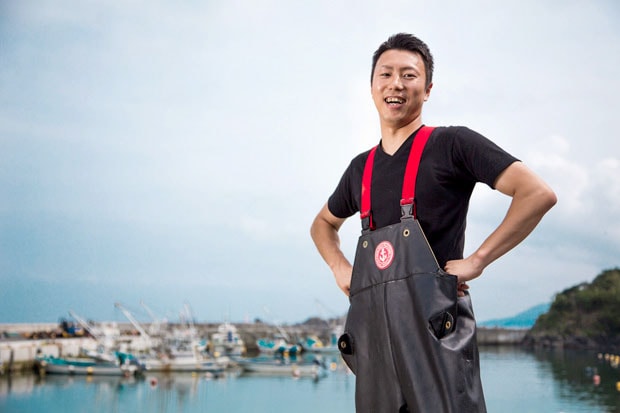
“10年以上最高級の評価”
“Highest evaluated Wakame for more than 10 years”
浜人のわかめ/阿部勝太
Hamannto Wakame/Shota Abe
東北最大級を誇る北上川。この河口の追波湾から南三陸町志津川との境まで、十三の集落が点在する「十三浜」。 川が山から海へ運ぶ豊かな栄養分をたっぷり吸収し、この辺りの地形が生む荒々しい波に鍛えられたワカメは、三陸の中でも10年以上最高級の評価をされている逸品。肉厚で、食べる時に「シャキシャキ」と音が出るほど、それでいて柔らかいのが特徴です。
Hamanto wakame grow up at Juusanhama, which means a coast with thirteen villages. It is located at a estuary of the largest river in northerneast Japan, Kitakami-river. The growth environment is with rich nuturient of mountains through Kitakami-river and raging wave of Sanriku. As a result, Hamanto Wakame is thick, crispy and soft. It is even highest evaluated Wakame for more than 10 years.

“至高のわかめ”
“Spreme Wakame”
末永海産のわかめ/古藤野靖
Suenaga Wakame/Yasushi Kotohno
三陸の中でも波が荒い岩手県綾里浜の外洋で育った、産地限定のわかめです。肉厚でいて食感が良く、柔らかく食べやすい。わかめ目利きの末永海産が自信を持って紹介する、三陸一の至高わかめです。
Suenaga Wakame grows up at open Sea of Ryori beach in Iwate, which is known as one of the roughest-wave sea in Sanriku.
Our connoisseurs select and offer it with assurance. The Wakame is thick, good texture, soft, easy-to-eat.
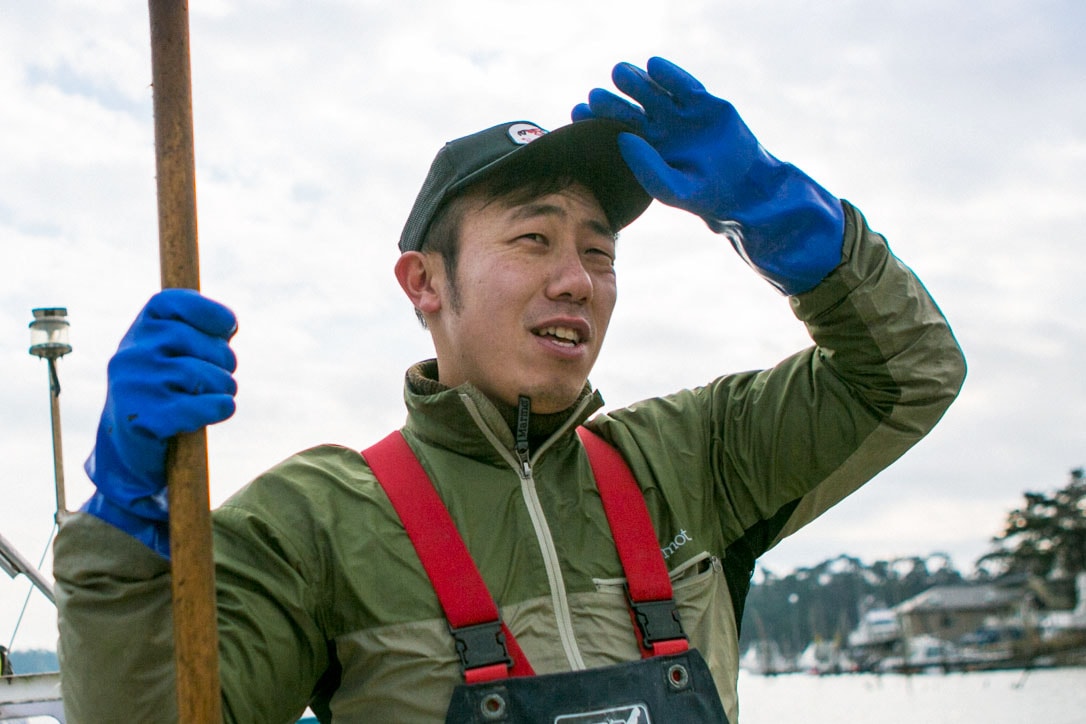
“栄養塩に富んだ内湾で育てたわかめ本来の旨味をご堪能ください”
“Enjoy inartificial taste of Wakame grown up at nutrient-rich inner bay”
塩釜のわかめ/赤間俊介
Shiogama Wakame/Shunsuke Akama
金華山の天然わかめより採苗し、色艶、形状、成長が良い種を選抜し無基質培養しました。
新育種「金華の誉」の特徴
1:葉の表面が滑らかで、口の中に入れた時にツルッと感じる。
2:葉の切れ目が深く、切れ目谷間と茎の間が狭い。
3:葉の表面積が小さく、細めであること。
三陸で1番早い12月初旬より販売開始。栄養塩に富み、水温が安定している松島内湾産のわかめは、つるりとして柔らかい食感で優しい口当たり、深い香りと味わいが特徴です。3代目漁師赤間俊介のわかめです。
Spore is collected from Natural Wakame at Mt. Kinkazan, and selected from the point of color, shape, and health status. Then it is cultivated without substrates.
“Kinka-no-Homare”, new breeding , has three charactaristics.
1. Leaf surface is smooth, that you feel slippy in your mouth.
2. Lobation of leaves is deep.
3. Leaf surface area is small and thin.
The Wakame grow up with sutable temperature water at inner bay, Matsushima.We can supply form the beginning of December, the fastest in Sanriku.The third-generation fisherman is Shunsuke Akama. Please enjoy the slippy and soft mouthfull and strong flavor.
育成
わかめは1年で胞子から成葉までのサイクルを繰り返す海藻です。

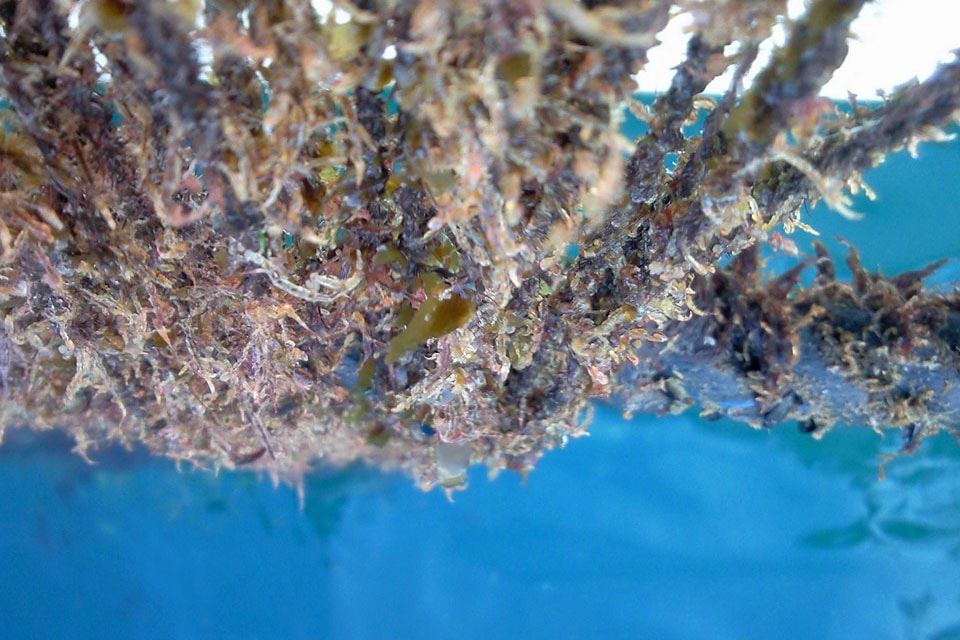
1.発芽:Germination
成長したわかめの根元にあるめかぶから胞子が発散され、発芽し、幼葉となります(約2~3cm)。
Grown wakame produces spore at the root “Mekabu”. Spore germinates, and then grows up to young leaves(about 2-3cm).
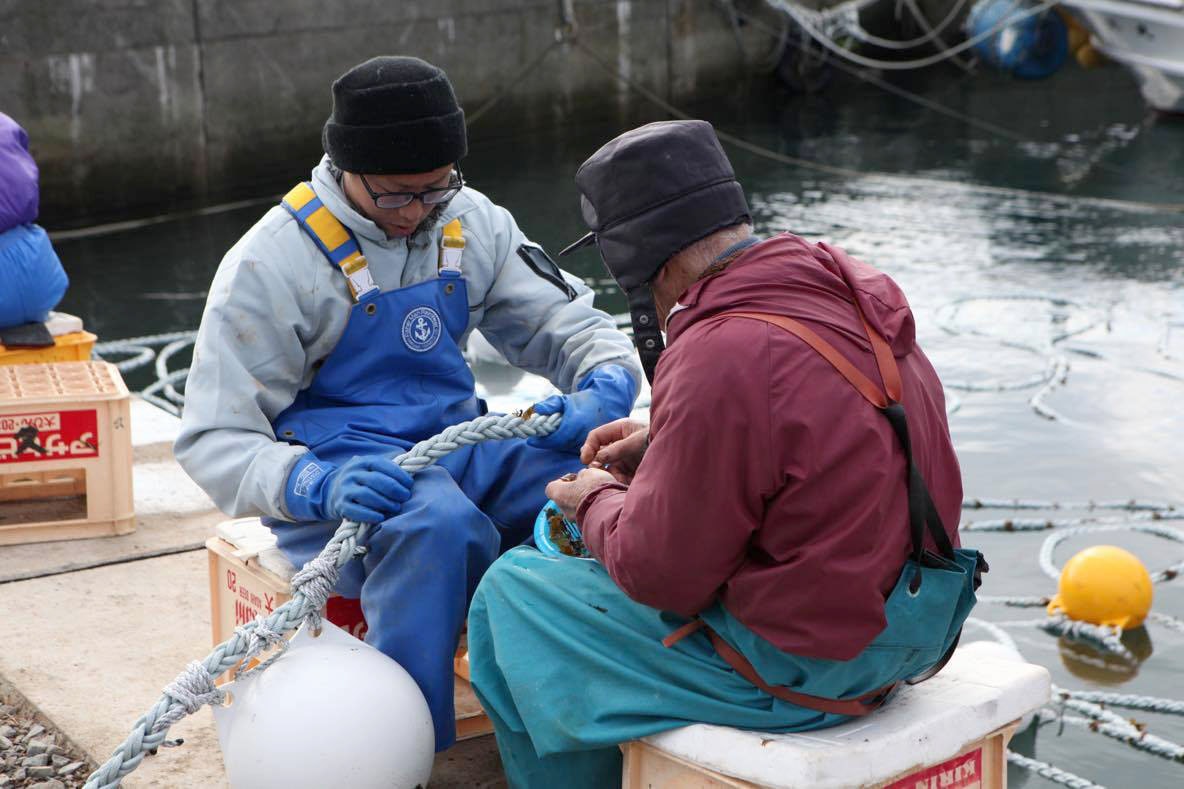
2.種付け:Putting in the Sea
養殖わかめでは、幼葉を長いロープに間隔をあけて挟み込み、そのロープを海に垂らします。天然わかめでは海底の岩場から発芽します。
Farming Wakame: Young leaves are put on long rope at intervals.The rope is hung down into the sea . Natural Wakame: Young leaves germinate from the rocky seabed.
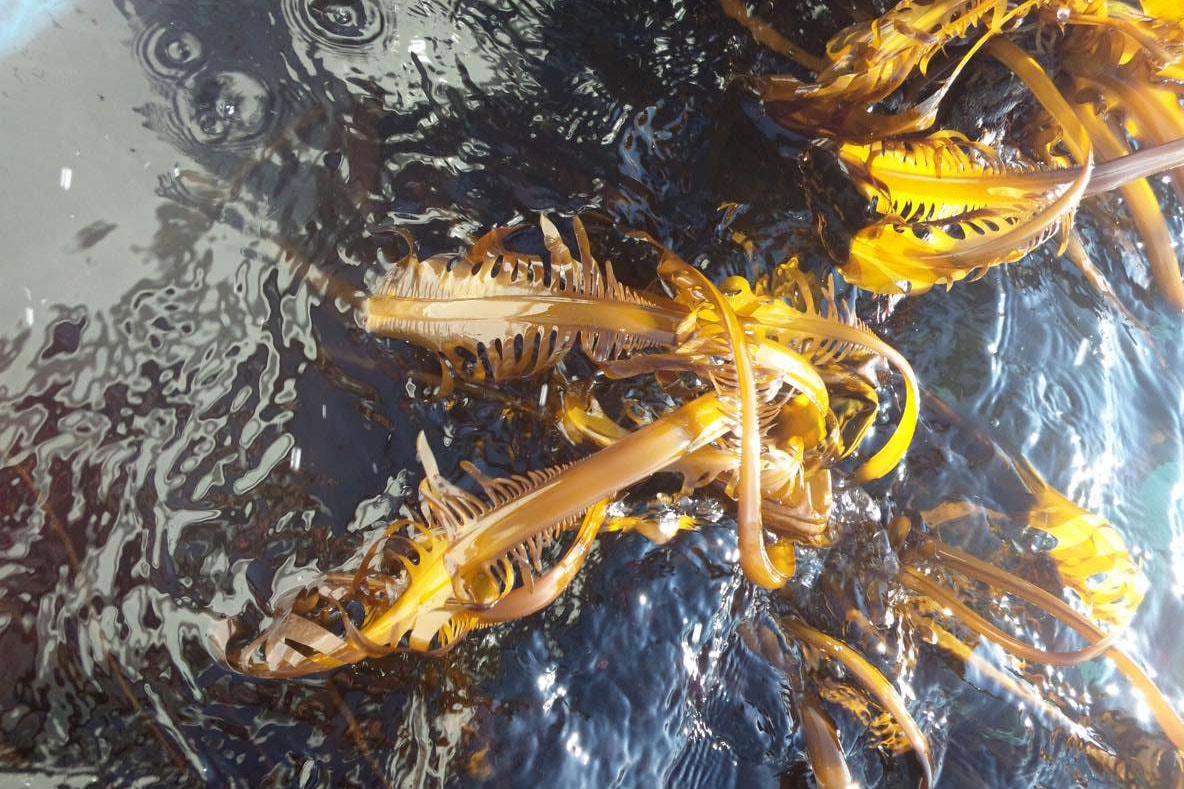
3.成長:Growing up
海の中でわかめが成長するのを待ちます。養殖わかめは海面側から下へ、天然わかめは岩場から上に成長していきます。4~6ヶ月で約200~300cmまで成長します。
It takes 4 to 6 monthes that young leaves grow up to adult leaves (about 200-300cm). Farming Wakame grows from sea surface toward the bottom. Natural Wakame grows from sea bed to the up.
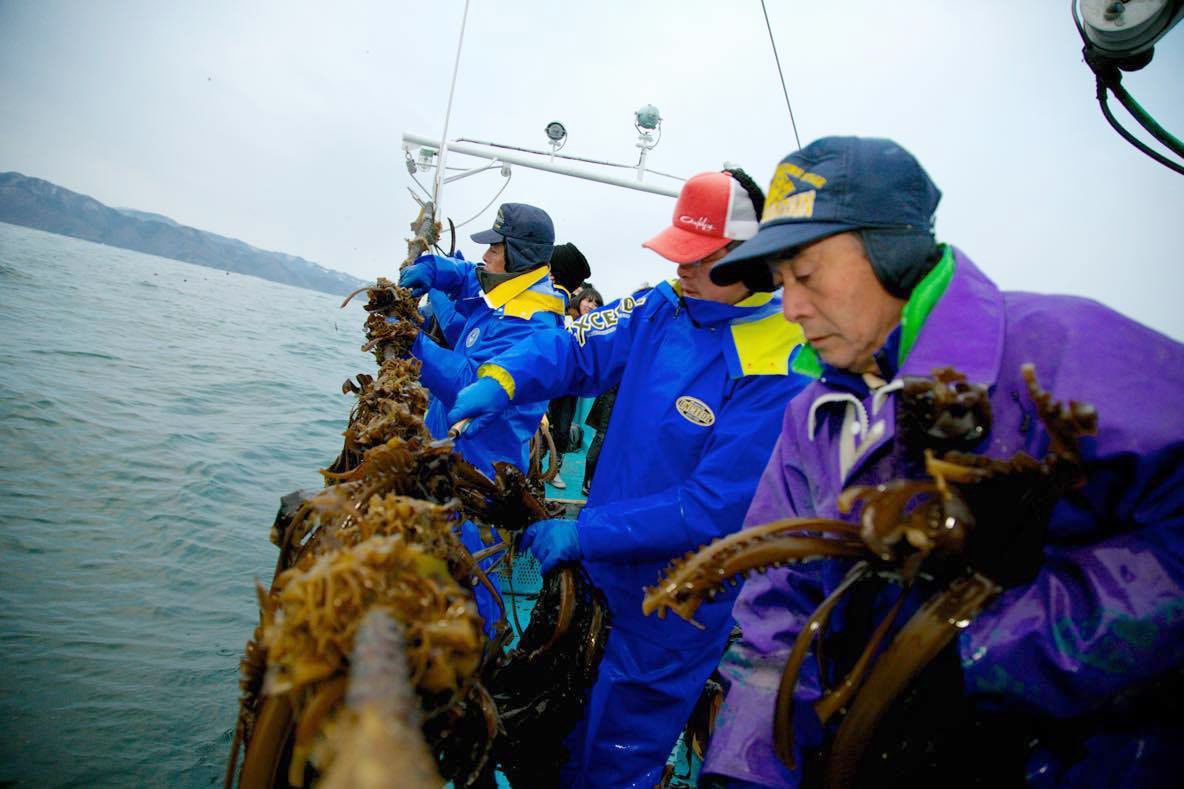
4.収穫:Harvesting
養殖わかめではロープから、天然わかめでは漁師が海底に潜って岩場から、カマで刈り取り収穫します。
Adult leaves are reaped with a sickle. Faming Wakame is reaped off from long roap. Natural Wakame is reaped off from sea bed by diving fisherman.
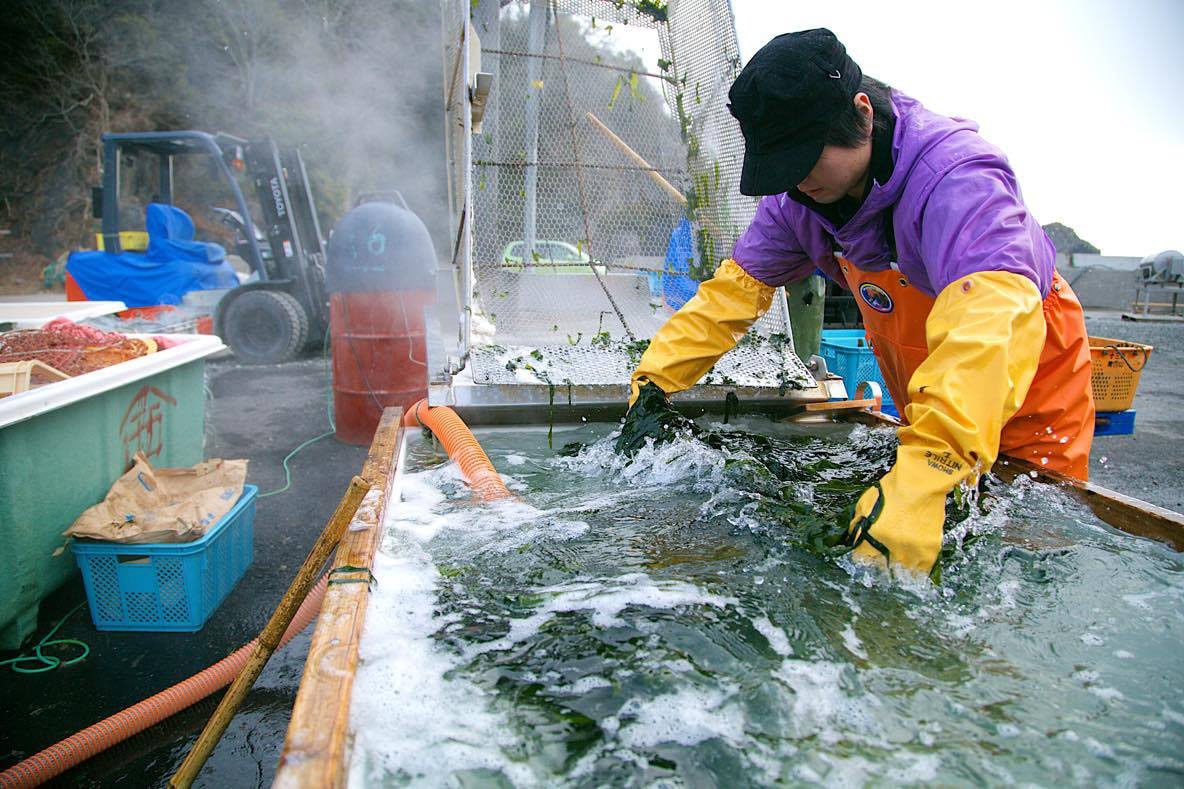
5.湯通し:Boiling
収穫したわかめを沸騰した海水で茹で、冷水で冷やします。茹でる前は褐色だったわかめが、茹で上がると緑色へ色が変わります。
Harvested Wakame is boiled in seawater, and then cooled in cold water. When Wakame gets into boiled water, its color changes from brown to grean immediately.

6.塩蔵:Salting preservation
芽かぶを分離し、芯抜き、裁断を行います。十分な塩でまぶし、余分な水分を抜いて塩蔵します。
Wakame is separated from the bud “Mekabu”, cored, and cut. It dusted with plenty of salt, and removed the excess moisture to preserve.

